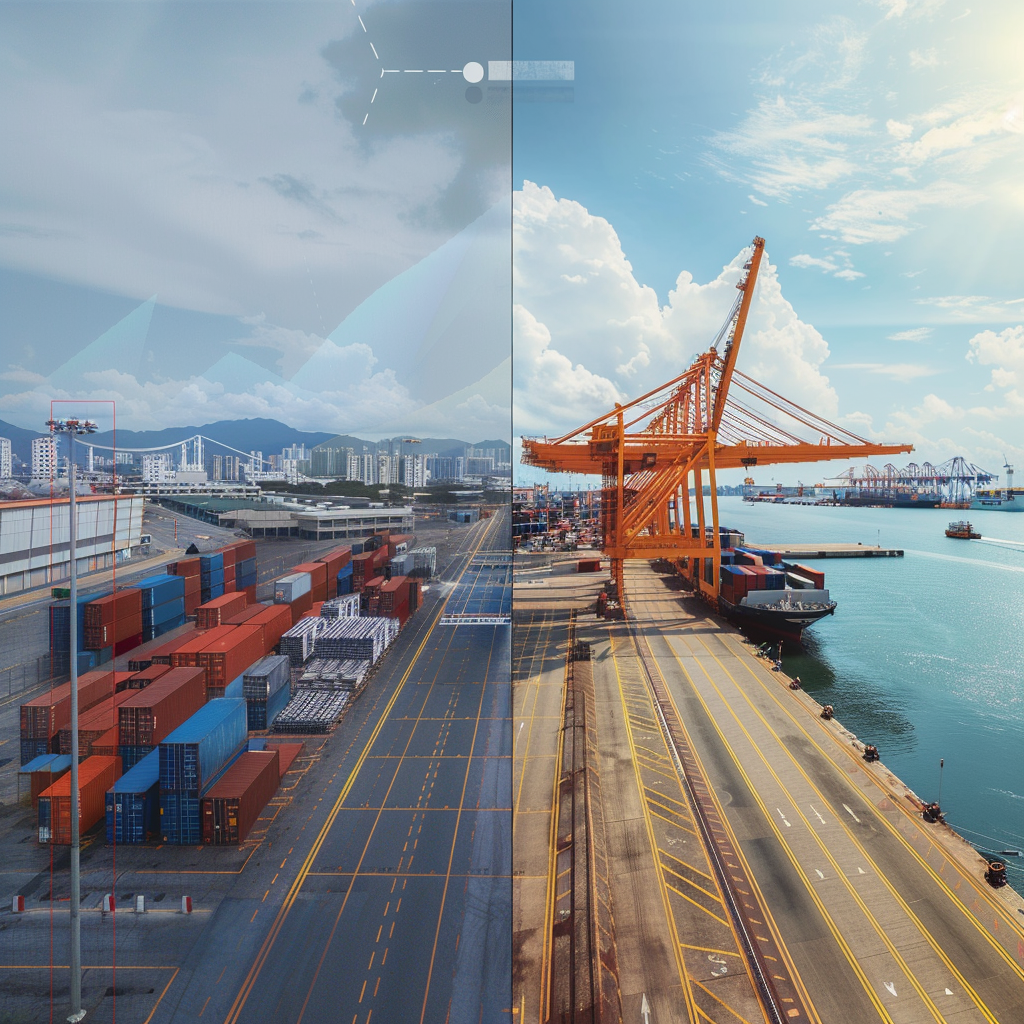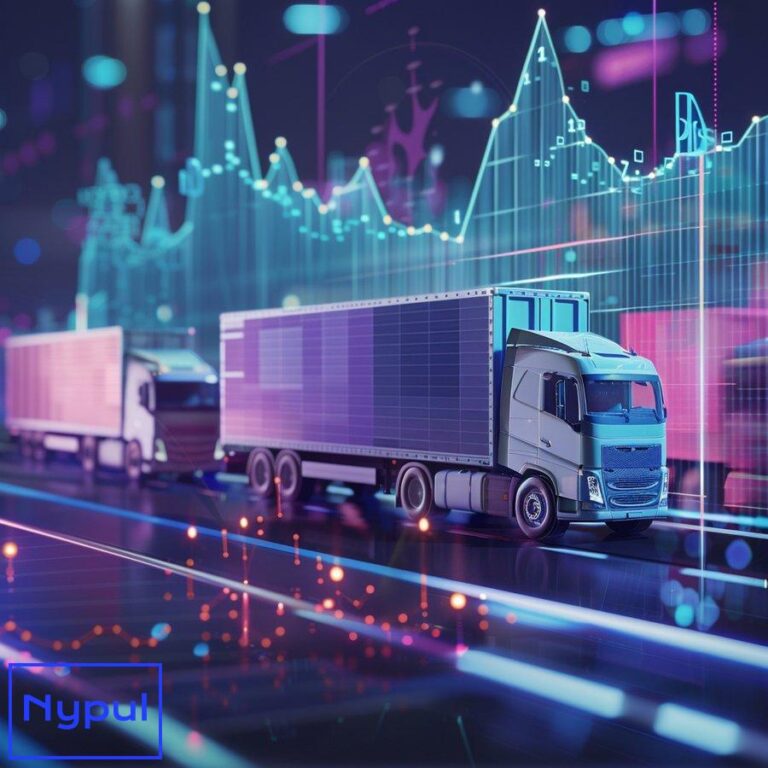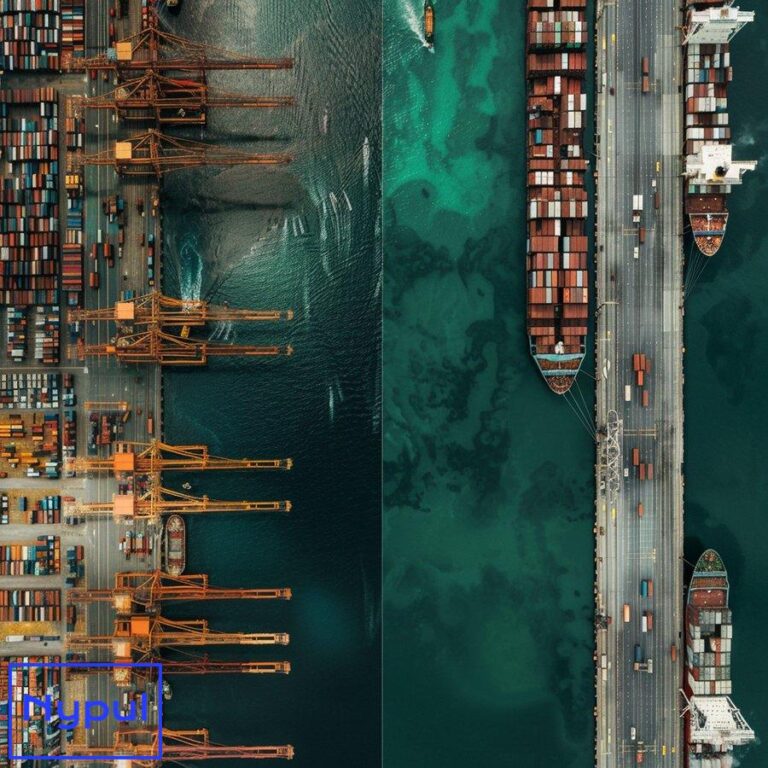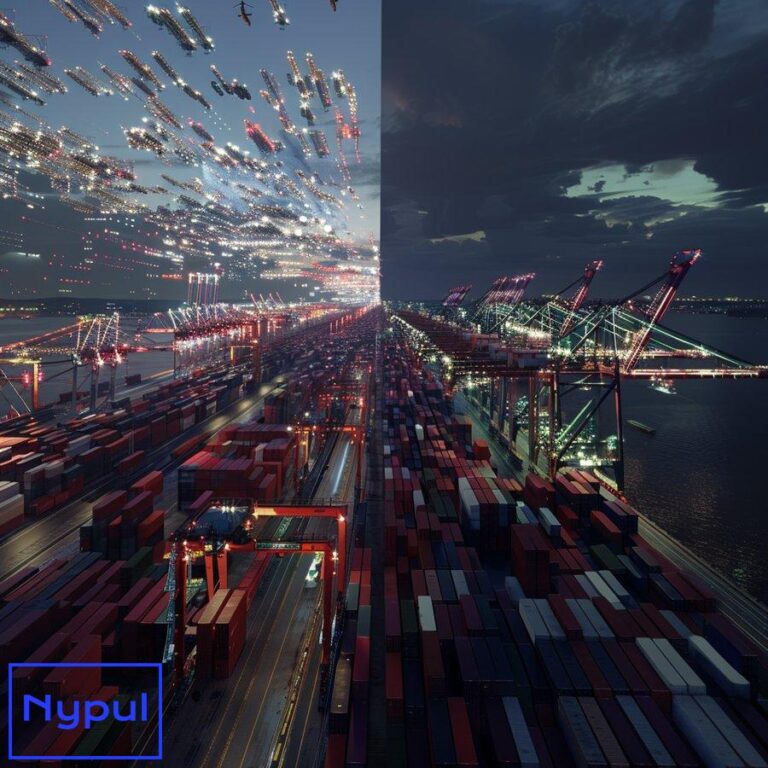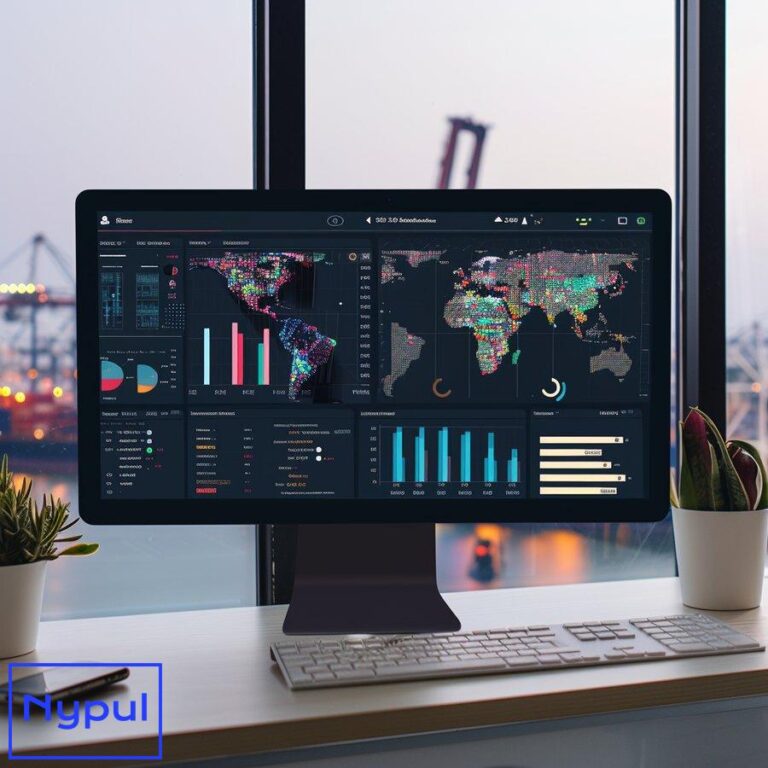What Is Automation of Port Processes to Improve Port Handling Efficiency and Reduce Errors
What is port automation and why is it necessary?
Port automation refers to the use of advanced technologies and systems to streamline and optimize various processes within seaports and container terminals. This includes automating equipment like cranes and vehicles, as well as implementing software systems to manage operations.
Port automation has become increasingly necessary due to several key factors:
Rising cargo volumes
Global trade continues to grow, with container volumes expected to double by 2050. Ports need to handle more cargo without expanding their physical footprint.
Larger vessels
Container ships have grown dramatically in size, with the largest now capable of carrying over 24,000 TEUs. This concentrates cargo volumes and puts pressure on ports to load/unload quickly.
Labor challenges
Many ports face shortages of skilled labor. Automation can help address this by reducing reliance on manual operations.
Safety concerns
Automated systems can improve safety by removing humans from dangerous areas and reducing accidents.
Environmental pressures
Ports face increasing scrutiny of their environmental impact. Automation can improve energy efficiency and reduce emissions.
Cost reduction
Automated systems can significantly reduce operating costs over time compared to manual operations.
Competitive pressures
As some ports automate, others feel pressure to follow suit to remain competitive in attracting shipping lines.
The necessity for port automation is driven by the need to boost productivity, enhance safety, reduce costs, and remain competitive in a rapidly evolving global trade landscape. While the initial investment is substantial, automation allows ports to handle growing cargo volumes more efficiently within existing infrastructure.
Automated ports leverage a combination of hardware and software technologies:
Hardware:
– Automated stacking cranes
– Automated guided vehicles
– Automated rail-mounted gantry cranes
– Automated truck handling systems
Software:
– Terminal operating systems
– Equipment control systems
– Gate automation systems
– Real-time location systems
By integrating these technologies, ports can create a seamless automated environment from the vessel to the gate. This allows for 24/7 operations with minimal human intervention, dramatically improving efficiency and reliability.
The degree of automation can vary significantly between ports. Some may automate only certain processes, while others aim for full automation across all operations. The appropriate level depends on factors like cargo volumes, available capital, and local labor considerations.
As global trade continues to grow in volume and complexity, port automation will likely become the norm rather than the exception. Ports that successfully implement automation stand to gain significant competitive advantages in the years ahead.
How do automated equipment and control systems transform port operations?
Automated equipment and control systems are revolutionizing port operations, fundamentally changing how cargo is handled and managed. This transformation impacts every aspect of port activities, from ship-to-shore operations to yard management and gate processes.
Ship-to-Shore Operations
Automated quay cranes are at the forefront of this transformation. These cranes use advanced sensors and control systems to precisely position containers, significantly reducing the time required for loading and unloading vessels.
Key features:
– Remote operation from control rooms
– Automated positioning and anti-sway systems
– Optical character recognition for container identification
– Integration with terminal operating systems for real-time data exchange
The impact is substantial – automated quay cranes can achieve productivity rates of up to 40 moves per hour, compared to 25-30 for manual operations.
Yard Operations
In the container yard, automated stacking cranes (ASCs) and automated guided vehicles (AGVs) work in tandem to optimize container storage and retrieval.
ASCs:
– Operate 24/7 without breaks
– Stack containers higher and denser
– Use sophisticated algorithms for optimal stacking
AGVs:
– Navigate using magnetic strips or GPS
– Coordinate with ASCs for seamless container handoffs
– Operate without human drivers, reducing labor costs and improving safety
This automated yard system can increase yard capacity by up to 30% while reducing operating costs by 25-45%.
Gate Operations
Automated gate systems streamline the entry and exit of trucks, significantly reducing wait times and improving overall port throughput.
Components:
– Optical character recognition cameras
– RFID readers
– Automated kiosks for driver interaction
– Integration with terminal operating systems
These systems can process a truck in as little as 1 minute, compared to 3-5 minutes for manual gates.
Control Systems
Tying all these automated components together are sophisticated control systems and terminal operating systems (TOS). These act as the “brain” of the automated port, coordinating all activities and optimizing operations in real-time.
Functions:
– Equipment dispatch and routing
– Real-time tracking of all containers and equipment
– Predictive maintenance scheduling
– Data analytics for continuous improvement
The impact of these control systems is profound, enabling ports to:
– Reduce idle time of equipment by up to 30%
– Improve overall terminal productivity by 10-35%
– Enhance visibility and predictability of operations
Transformation in Action
To illustrate the transformative power of automation, consider the following comparison between a traditional port and a fully automated one:
| Aspect | Traditional Port | Automated Port |
|---|---|---|
| Operating Hours | 16-20 hours/day | 24 hours/day |
| Labor Requirements | High | Low |
| Equipment Utilization | 60-70% | 80-90% |
| Container Dwell Time | 3-5 days | 1-2 days |
| Truck Turn Time | 60-90 minutes | 20-30 minutes |
| Safety Incidents | Moderate | Very Low |
This transformation not only improves efficiency and reduces costs but also enhances safety and environmental performance. Automated equipment produces fewer emissions and operates more consistently, reducing energy consumption.
The integration of automated equipment and control systems is reshaping port operations, enabling ports to handle increasing cargo volumes with greater efficiency, reliability, and safety. As technology continues to advance, the potential for further transformation remains significant, promising even greater benefits for ports that embrace automation.
Which key port processes benefit most from automation?
Port automation offers significant benefits across various operational areas, but certain key processes stand to gain the most from this technological advancement. Understanding these high-impact areas can help port operators prioritize their automation efforts for maximum return on investment.
Container Handling
Container handling is perhaps the area that benefits most dramatically from automation. This process encompasses the movement of containers from ship to shore, within the yard, and to and from trucks or trains.
Benefits of automation:
– Increased speed and precision in container movements
– 24/7 operation capability
– Reduced damage to containers and cargo
– Improved space utilization in the container yard
Automated container handling systems can increase productivity by up to 30% compared to manual operations.
Gate Operations
The port gate is often a bottleneck in traditional port operations. Automating this process can significantly improve overall port efficiency.
Automation benefits:
– Faster truck processing times
– Reduced congestion and waiting times
– Improved accuracy in container and truck identification
– Enhanced security through automated checks
Automated gate systems can reduce truck processing times from several minutes to less than one minute per truck.
Vessel Planning and Berthing
Automating the planning and execution of vessel berthing can optimize the use of berth space and improve overall port throughput.
Key advantages:
– More accurate prediction of vessel arrival times
– Optimal allocation of berth space based on vessel size and cargo
– Reduced vessel waiting times
– Improved coordination with terminal operations
Automated berthing systems can reduce vessel turnaround times by up to 20%.
Yard Planning and Management
Efficient yard management is crucial for maximizing port capacity and reducing container dwell times. Automation can significantly enhance this process.
Automation benefits:
– Optimal container stacking and retrieval strategies
– Real-time tracking of container locations
– Reduced container reshuffling
– Improved space utilization
Automated yard management can increase yard capacity by up to 30% without physical expansion.
Equipment Maintenance
Predictive maintenance enabled by automation can significantly reduce equipment downtime and maintenance costs.
Advantages:
– Real-time monitoring of equipment health
– Predictive maintenance scheduling
– Reduced unexpected breakdowns
– Extended equipment lifespan
Automated maintenance systems can reduce equipment downtime by up to 30%.
Data Management and Analytics
While not a physical process, data management and analytics underpin all port operations and can be greatly enhanced through automation.
Benefits:
– Real-time visibility of all port operations
– Advanced forecasting and planning capabilities
– Continuous performance optimization
– Enhanced decision-making based on data insights
Automated data systems can improve overall port productivity by 10-20% through optimized decision-making.
Comparative Impact of Automation on Key Port Processes
To illustrate the relative impact of automation on these key processes, consider the following table:
| Process | Potential Productivity Improvement | Impact on Overall Port Efficiency |
|---|---|---|
| Container Handling | 30-40% | Very High |
| Gate Operations | 50-70% | High |
| Vessel Planning and Berthing | 15-25% | Medium |
| Yard Planning and Management | 25-35% | High |
| Equipment Maintenance | 20-30% | Medium |
| Data Management and Analytics | 10-20% | High |
This comparison highlights that while all these processes benefit significantly from automation, container handling and gate operations stand to gain the most in terms of direct productivity improvements. However, the impact of data management and analytics on overall port efficiency should not be underestimated, as it enhances decision-making across all other processes.
By focusing automation efforts on these key processes, ports can maximize the benefits of their technology investments, significantly improving their operational efficiency, capacity, and competitiveness in the global shipping industry.
What are the primary advantages of implementing port automation?
Implementing port automation offers a wide range of benefits that can significantly enhance port operations, efficiency, and competitiveness. These advantages extend beyond mere operational improvements, impacting various aspects of port management and performance.
Increased Operational Efficiency
Automation dramatically improves the speed and accuracy of port operations, leading to significant efficiency gains.
Key improvements:
– Faster container handling speeds
– Reduced vessel turnaround times
– Optimized use of yard space
– Streamlined gate operations
Automated ports can achieve productivity rates up to 50% higher than traditional ports.
Enhanced Safety
By reducing human involvement in dangerous areas, automation significantly improves workplace safety.
Safety benefits:
– Fewer accidents and injuries
– Reduced exposure to hazardous environments
– Improved compliance with safety regulations
– Enhanced emergency response capabilities
Automated ports typically see a 40-50% reduction in workplace accidents compared to manual operations.
Cost Reduction
While the initial investment in automation is substantial, it leads to significant long-term cost savings.
Areas of cost reduction:
– Lower labor costs
– Reduced equipment maintenance expenses
– Decreased energy consumption
– Minimized cargo damage and loss
Over time, automated ports can reduce operating costs by 25-55% compared to traditional ports.
Improved Environmental Performance
Automation enables ports to operate more sustainably and with a smaller environmental footprint.
Environmental benefits:
– Reduced carbon emissions
– Lower noise pollution
– Improved energy efficiency
– Optimized use of land resources
Automated equipment can reduce energy consumption by up to 25% compared to manual equipment.
Enhanced Reliability and Consistency
Automated systems operate with a high degree of consistency, leading to more predictable and reliable port operations.
Reliability improvements:
– Consistent performance regardless of weather or time of day
– Reduced variability in container handling times
– More accurate scheduling and planning
– Improved customer satisfaction
Automated ports can achieve on-time performance rates of up to 95%, compared to 70-80% for traditional ports.
Increased Capacity
Automation allows ports to handle higher volumes of cargo within the same physical footprint.
Capacity enhancements:
– Higher container stacking densities
– Faster container movements
– Optimized use of berth space
– Reduced container dwell times
Automated ports can increase their handling capacity by 30-50% without physical expansion.
Improved Data Management and Visibility
Automation generates vast amounts of data, enabling better decision-making and operational insights.
Data advantages:
– Real-time visibility of all port operations
– Advanced analytics for performance optimization
– Improved forecasting and planning capabilities
– Enhanced integration with supply chain partners
Data-driven decision making can improve overall port efficiency by 10-20%.
Competitive Advantage
Ports that successfully implement automation gain a significant edge in attracting shipping lines and cargo.
Competitive benefits:
– Ability to handle larger vessels more efficiently
– Faster cargo turnaround times
– More reliable and consistent service
– Enhanced reputation as a modern, high-performance port
Automated ports often see increases in market share of 10-20% within their regions.
Comparative Advantages of Port Automation
To illustrate the relative impact of these advantages, consider the following comparison between a traditional port and a fully automated port:
| Aspect | Traditional Port | Automated Port | Improvement |
|---|---|---|---|
| Container Moves per Hour | 25-30 | 35-40 | 30-40% |
| Annual Workplace Accidents | 10-15 per 1000 workers | 5-7 per 1000 workers | 50-60% reduction |
| Operating Costs (per container) | $100-120 | $60-80 | 30-50% reduction |
| CO2 Emissions (per container) | 18-22 kg | 12-15 kg | 30-40% reduction |
| On-Time Performance | 70-80% | 90-95% | 15-25% improvement |
| Container Yard Capacity | 100% (baseline) | 130-150% | 30-50% increase |
| Data-Driven Decision Making | Limited | Comprehensive | Significant improvement |
This comparison clearly illustrates the substantial advantages that automation can bring to port operations across multiple dimensions. While the specific improvements may vary depending on the extent of automation and the unique characteristics of each port, the overall trend is clear: automation offers significant benefits that can transform port performance and competitiveness.
By leveraging these advantages, automated ports are well-positioned to meet the growing demands of global trade, offering faster, more reliable, and more sustainable services to shipping lines and cargo owners. As automation technology continues to evolve, the potential for further improvements remains substantial, promising even greater benefits for ports that embrace this transformative technology.
How does automation reduce errors in port handling?
Automation plays a crucial role in minimizing errors across various port handling processes. By reducing human intervention and leveraging advanced technologies, automated systems significantly enhance accuracy and reliability in port operations.
Container Identification and Tracking
Automated systems use advanced technologies to accurately identify and track containers throughout their journey in the port.
Error reduction methods:
– Optical Character Recognition (OCR) for container number reading
– Radio-Frequency Identification (RFID) tags for real-time tracking
– Automated data entry and verification
These systems can achieve container identification accuracy rates of up to 99.9%, compared to 95-98% for manual processes.
Container Positioning and Stacking
Automated stacking cranes and yard management systems optimize container placement and retrieval, minimizing errors in yard operations.
Error reduction features:
– Precise positioning systems with millimeter-level accuracy
– Automated inventory management and location tracking
– Optimized stacking algorithms to minimize reshuffling
Automated yard systems can reduce container misplacement errors by up to 90% compared to manual operations.
Equipment Routing and Dispatch
Automated guided vehicles (AGVs) and intelligent dispatch systems ensure efficient and error-free movement of containers within the port.
Error reduction capabilities:
– Precise navigation and routing algorithms
– Real-time traffic management to avoid collisions
– Automated task assignment and prioritization
These systems can reduce equipment routing errors and inefficiencies by up to 80% compared to manual dispatch.
Data Entry and Documentation
Automation significantly reduces errors in data entry and documentation processes, which are critical for smooth port operations and compliance.
Error reduction methods:
– Automated data capture from various sources (OCR, RFID, sensors)
– Integrated systems for seamless data transfer between processes
– Automated validation and error checking
Automated data systems can reduce data entry errors by up to 99% compared to manual processes.
Load Planning and Vessel Stowage
Automated planning systems optimize container loading and unloading processes, reducing errors in vessel stowage.
Error reduction features:
– Advanced algorithms for optimal load distribution
– Real-time updates based on actual container weights and positions
– Integration with vessel stability calculations
These systems can reduce stowage plan errors by up to 70% compared to manual planning.
Equipment Maintenance
Predictive maintenance systems powered by automation help prevent equipment failures and associated handling errors.
Error reduction capabilities:
– Real-time monitoring of equipment health
– Predictive analytics to forecast potential failures
– Automated scheduling of maintenance activities
Automated maintenance systems can reduce equipment-related handling errors by up to 60% by preventing unexpected breakdowns.
Gate Operations
Automated gate systems streamline truck processing and reduce errors in container check-in and check-outError reduction methods:
– Automated data capture from various sources (OCR, RFID, sensors)
– Integrated systems for seamless data transfer between processes
– Automated validation and error checking
Automated data systems can reduce data entry errors by up to 99% compared to manual processes.
Load Planning and Vessel Stowage
Automated planning systems optimize container loading and unloading processes, reducing errors in vessel stowage.
Error reduction features:
– Advanced algorithms for optimal load distribution
– Real-time updates based on actual container weights and positions
– Integration with vessel stability calculations
These systems can reduce stowage plan errors by up to 70% compared to manual planning.
Equipment Maintenance
Predictive maintenance systems powered by automation help prevent equipment failures and associated handling errors.
Error reduction capabilities:
– Real-time monitoring of equipment health
– Predictive analytics to forecast potential failures
– Automated scheduling of maintenance activities
Automated maintenance systems can reduce equipment-related handling errors by up to 60% by preventing unexpected breakdowns.
Gate Operations
Automated gate systems streamline truck processing and reduce errors in container check-in and check-out.
Error reduction methods:
– Automated identification of trucks and containers using OCR and RFID
– Integrated systems for real-time data exchange with terminal operating systems
– Automated validation of container details and gate instructions
These systems can reduce gate-related errors by up to 80% compared to manual processes.
Comparative Impact of Automation on Error Reduction in Port Handling
To illustrate the relative impact of automation on error reduction across various port handling processes, consider the following table:
| Process | Potential Error Reduction |
|---|---|
| Container Identification and Tracking | 95-99% |
| Container Positioning and Stacking | 80-90% |
| Equipment Routing and Dispatch | 70-80% |
| Data Entry and Documentation | 95-99% |
| Load Planning and Vessel Stowage | 60-70% |
| Equipment Maintenance | 50-60% |
| Gate Operations | 70-80% |
This comparison highlights that automation has the most significant impact on reducing errors in container identification and tracking, data entry and documentation, and container positioning and stacking. However, all port handling processes benefit substantially from automation in terms of error reduction.
By leveraging these error reduction capabilities, automated ports can enhance overall operational reliability, reduce costly mistakes, and improve customer satisfaction. As automation technology continues to advance, the potential for further error reduction remains substantial, promising even greater benefits for ports that embrace this transformative technology.
What challenges do ports face when implementing automation?
While the benefits of port automation are substantial, implementing this transformative technology also presents significant challenges that ports must overcome. These challenges span various aspects, including technological, financial, operational, and human factors.
Technological Challenges
Integrating complex automated systems and ensuring seamless interoperability is a significant technological hurdle.
Key challenges:
– Compatibility between different equipment and software systems
– Reliable and secure data communication networks
– Robust cybersecurity measures to protect against threats
– Scalability of systems to accommodate future growth
Ports must carefully plan and execute their automation projects to overcome these technological barriers.
Financial Challenges
Implementing automation requires substantial upfront investments, which can be a significant barrier for many ports.
Financial challenges:
– High initial capital costs for automated equipment and systems
– Ongoing maintenance and upgrade expenses
– Potential disruptions to operations during implementation
– Uncertainty around return on investment (ROI) timelines
Ports must develop robust business cases and secure adequate funding to successfully implement automation.
Operational Challenges
Integrating automated systems into existing port operations can be complex and disruptive.
Operational challenges:
– Retraining and redeployment of existing workforce
– Adapting operational processes and workflows to leverage automation
– Ensuring seamless integration with supply chain partners
– Maintaining operations during the transition to automation
Ports must carefully plan and execute their automation projects to minimize operational disruptions and ensure a smooth transition.
Human Factors Challenges
Automation can have significant impacts on the port workforce, which must be carefully managed.
Human factors challenges:
– Resistance to change and fear of job losses
– Lack of skills and training for new automated systems
– Adapting to new roles and responsibilities
– Ensuring adequate human oversight and intervention
Ports must engage with their workforce, provide training and support, and develop new organizational structures to address these challenges.
Regulatory and Legal Challenges
Automation may raise new regulatory and legal questions that ports must address.
Regulatory challenges:
– Compliance with safety and environmental regulations
– Liability and insurance issues related to automated systems
– Data privacy and security regulations
– Customs and trade regulations
Ports must work closely with regulators and legal experts to ensure compliance and mitigate risks.
Comparative Challenges of Port Automation Implementation
To illustrate the relative impact of these challenges, consider the following comparison:
| Challenge | Potential Impact |
|---|---|
| Technological | High |
| Financial | High |
| Operational | Medium |
| Human Factors | Medium |
| Regulatory and Legal | Low |
This comparison suggests that technological and financial challenges are the most significant barriers to port automation implementation, with operational and human factors challenges also posing substantial hurdles. Regulatory and legal challenges, while important, are relatively less impactful compared to the other categories.
To overcome these challenges, ports must adopt a comprehensive and strategic approach to automation implementation. This includes:
- Developing a clear vision and roadmap for automation
- Engaging with stakeholders, including workforce, supply chain partners, and regulators
- Investing in robust planning and project management capabilities
- Leveraging the expertise of automation technology providers and consultants
- Continuously monitoring and adapting to emerging challenges and opportunities
By addressing these challenges proactively and strategically, ports can successfully implement automation and reap the substantial benefits it offers. As the global trade landscape continues to evolve, automation will likely become an increasingly critical component of port competitiveness and success.
How can ports measure the efficiency gains from automation?
Measuring the efficiency gains from port automation is crucial for justifying investments, tracking progress, and identifying areas for improvement. However, quantifying the impact of automation can be complex, as it involves multiple factors and interrelated processes.
Key Performance Indicators (KPIs) for Measuring Automation Efficiency
Ports can use a range of KPIs to measure the efficiency gains from automation. These KPIs should be aligned with the port’s strategic objectives and cover various aspects of operations, including productivity, reliability, safety, and cost-effectiveness.
Some of the most commonly used KPIs for measuring automation efficiency include:
Productivity KPIs:
– Moves per hour (MPH) for quay cranes and yard equipment
– Container dwell time in the yard
– Truck turn time at the gate
– Vessel turnaround time
Reliability KPIs:
– On-time performance for vessel arrivals and departures
– Equipment availability and utilization rates
– Percentage of containers handled without errors or damage
Safety KPIs:
– Workplace accident frequency rate
– Equipment incident rate
Cost KPIs:
– Operating cost per container handled
– Maintenance cost per equipment hour
– Energy consumption per container
Environmental KPIs:
– Carbon emissions per container
– Energy efficiency of automated equipment
– Percentage of containers moved by electric or hybrid vehicles
Benchmarking and Comparative Analysis
To fully understand the efficiency gains from automation, ports should benchmark their performance against industry standards and peer ports. This comparative analysis can help identify areas where automation has had the most significant impact and highlight opportunities for further improvement.
When benchmarking, ports should consider factors such as:
– Cargo mix and volumes
– Terminal size and layout
– Equipment types and ages
– Labor practices and regulations
By comparing their performance to industry leaders and similar ports, ports can set realistic targets for automation efficiency and identify best practices to emulate.
Data Collection and Analysis
Measuring the efficiency gains from automation requires robust data collection and analysis capabilities. Automated ports generate vast amounts of data from various sources, including equipment sensors, gate systems, and terminal operating systems.
To effectively leverage this data, ports should:
– Implement integrated data management systems
– Develop advanced analytics capabilities
– Establish data governance policies and procedures
– Train personnel in data analysis and interpretation
By harnessing the power of data, ports can gain deeper insights into the impact of automation and make more informed decisions about future investments and optimization strategies.
Continuous Improvement and Optimization
Measuring the efficiency gains from automation is an ongoing process that requires continuous monitoring, evaluation, and optimization. As ports gain experience with automation and technology advances, they should regularly review their KPIs and adjust their strategies accordingly.
Key elements of a continuous improvement approach include:
– Regularly reviewing and updating KPIs based on changing priorities and conditions
– Conducting root cause analyses to identify and address performance issues
– Implementing continuous improvement methodologies such as Lean and Six Sigma
– Fostering a culture of innovation and experimentation
By embracing a continuous improvement mindset, ports can maximize the benefits of automation and stay ahead of the curve in an increasingly competitive global trade environment.
Measuring the Holistic Impact of Automation
While quantifiable KPIs are essential for measuring the efficiency gains from automation, ports should also consider the broader, more qualitative impacts of automation. These include:
- Improved customer satisfaction and loyalty
- Enhanced reputation and brand image
- Increased attractiveness for investment and talent
- Contribution to regional economic development and job creation
By considering both the tangible and intangible benefits of automation, ports can build a compelling case for continued investment and demonstrate the value of automation to a wide range of stakeholders.
In conclusion, measuring the efficiency gains from port automation requires a comprehensive and multifaceted approach that combines quantitative KPIs, benchmarking, data analysis, and continuous improvement. By effectively measuring and communicating the impact of automation, ports can justify investments, drive continuous improvement, and position themselves for long-term success in the global trade landscape.
What role does AI and machine learning play in port automation?
Artificial Intelligence (AI) and Machine Learning (ML) are playing an increasingly important role in port automation, enabling more advanced and intelligent systems that can optimize operations, enhance decision-making, and adapt to changing conditions.
AI and ML Applications in Port Automation
AI and ML are being applied across various aspects of port automation, including:
Equipment Control and Optimization
– Predictive maintenance using sensor data and ML algorithms
– Automated routing and dispatching of equipment using AI-powered decision support systems
– Optimizing container stacking and retrieval using ML-based algorithms
Terminal Planning and Management
– Forecasting cargo volumes and vessel arrivals using AI-based predictive analytics
– Optimizing yard layouts and container storage strategies using ML algorithms
– Automating vessel berthing and unloading plans using AI-powered planning systems
Gate and Landside Operations
– Predicting and managing truck arrival patterns using AI-based forecasting models
– Automating gate processing and container inspection using computer vision and ML
– Optimizing truck routing and scheduling using AI-powered decision support systems
Data Management and Analytics
– Automating data collection and integration from various sources using AI-powered systems
– Identifying patterns, trends, and anomalies in port operations data using ML algorithms
– Generating real-time insights and recommendations using AI-based decision support systems
Advantages of AI and ML in Port Automation
AI and ML offer several key advantages in the context of port automation:
Improved Efficiency and Productivity
AI and ML algorithms can optimize equipment utilization, minimize idle time, and streamline operations, leading to significant productivity gains.
Enhanced Decision-Making
AI-powered decision support systems can analyze vast amounts of data, identify patterns and trends, and generate insights to support better decision-making by port operators.
Increased Flexibility and Adaptability
ML algorithms can adapt to changing conditions, such as fluctuations in cargo volumes or weather patterns, and adjust operations accordingly.
Reduced Errors and Inconsistencies
AI and ML can help eliminate human errors, reduce variability in operations, and ensure more consistent and reliable performance.
Improved Safety and Security
AI-powered systems can enhance safety by monitoring equipment and personnel, detecting potential hazards, and automating security checks.
Challenges and Limitations of AI and ML in Port Automation
While AI and ML offer significant potential benefits, they also present some challenges and limitations:
Data Quality and Availability
Effective AI and ML applications require large, high-quality datasets, which may not always be available or accessible in port environments.
Interpretability and Explainability
Many AI and ML algorithms are complex and “black-box” in nature, making it difficult to understand how they arrive at decisions and recommendations.
Cybersecurity Risks
Increased reliance on AI and ML systems can expose ports to new cybersecurity threats, such as data breaches, system hacks, and malicious attacks.
Workforce Adaptation
Implementing AI and ML in port automation may require significant workforce retraining and adaptation, as employees need to learn how to work with and interpret AI-powered systems.
Regulatory and Ethical Considerations
The use of AI and ML in port automation raises important regulatory and ethical questions, such as liability for AI-caused errors or accidents, data privacy concerns, and the impact on employment.
The Future of AI and ML in Port Automation
As AI and ML technologies continue to advance, their role in port automation is likely to grow more significant. Some potential future developments include:
- Fully autonomous and self-learning equipment and systems
- Real-time, end-to-end optimization of port operations using AI-powered decision support systems
- Predictive analytics and prescriptive recommendations for port operators based on AI insights
- Increased integration of AI and ML with other emerging technologies, such as the Internet of Things (IoT), blockchain, and 5G networks
To fully harness the potential of AI and ML in port automation, ports will need to invest in robust data infrastructure, upskill their workforce, and collaborate with technology providers and research institutions. By embracing these transformative technologies, ports can stay ahead of the curve and maintain their competitiveness in the global trade landscape.
How are leading global ports successfully implementing automation?
As port automation becomes increasingly critical for competitiveness and efficiency, many leading global ports are successfully implementing automation strategies tailored to their unique needs and challenges. Here are a few examples of how some of the world’s top ports are embracing automation:
Port of Rotterdam, Netherlands
The Port of Rotterdam, one of the largest ports in the world, has been at the forefront of port automation. Key automation initiatives include:
- Automated container terminals with remote-controlled quay cranes and automated guided vehicles (AGVs)
- Automated rail-mounted gantry cranes in the container yard
- Automated gate systems with OCR and RFID for truck processing
- Integrated terminal operating systems with advanced analytics capabilities
These automation efforts have helped the port achieve significant efficiency gains, including a 35% increase in container handling productivity and a 25% reduction in operating costs.
Port of Los Angeles, USA
The Port of Los Angeles, the busiest container port in the United States, has been investing heavily in automation to improve efficiency and competitiveness. Key automation projects include:
- Automated container terminals with electric automated stacking cranes (eASCs) and automated container terminals (ACTs)
- Automated truck appointment systems to manage truck arrivals and reduce congestion
- Integrated port community systems to facilitate data sharing and collaboration among supply chain stakeholders
- Predictive maintenance systems using IoT sensors and machine learning to optimize equipment uptime
These automation initiatives have helped the port achieve a 30% increase in container throughput and a 20% reduction in truck turn times.
Port of Singapore, Singapore
The Port of Singapore, one of the busiest ports in the world, has been leveraging automation and digital technologies to enhance its competitiveness. Key automation projects include:
- Automated container terminals with remote-controlled quay cranes and automated yard cranes
- Automated guided vehicles (AGVs) for container transportation within the terminal
- Automated gate systems with facial recognition and RFID for truck processing
- Integrated port community systems with blockchain technology for secure and transparent data sharing
These automation efforts have helped the port achieve a 36% increase in container handling productivity and a 25% reduction in operating costs.
Port of Qingdao, China
The Port of Qingdao, one of the largest ports in China, has been investing heavily in automation to improve efficiency and reduce environmental impact. Key automation projects include:
- Automated container terminals with electric automated stacking cranes (eASCs) and automated guided vehicles (AGVs)
- Automated rail-mounted gantry cranes in the container yard
- Automated gate systems with OCR and RFID for truck processing
- Integrated terminal operating systems with machine learning algorithms for predictive analytics
These automation initiatives have helped the port achieve a 40% increase in container handling productivity and a 30% reduction in carbon emissions.
Comparative Analysis of Automation Strategies
While each port has its unique automation strategy, there are some common themes and best practices that emerge from these examples:
- Investing in advanced automated equipment such as remote-controlled cranes, AGVs, and eASCs to improve productivity and efficiency
- Implementing automated gate systems with OCR and RFID to streamline truck processing and reduce congestion
-
Developing integrated terminal operating systems with advanced analytics anand machine learning capabilities to optimize operations and decision-making
-
Fostering collaboration among stakeholders through integrated port community systems to enhance data sharing and communication across the supply chain
-
Prioritizing sustainability by implementing energy-efficient equipment and practices, thereby reducing the environmental impact of port operations
-
Engaging in continuous improvement initiatives to assess performance, identify areas for enhancement, and adapt to changing market conditions
Future Trends in Port Automation
As automation technology continues to evolve, leading global ports are likely to adopt several emerging trends to further enhance their operations:
-
Increased Use of AI and Machine Learning: Ports will increasingly leverage AI and ML for predictive analytics, optimizing operations, and improving decision-making processes.
-
Expansion of Autonomous Systems: The deployment of fully autonomous vehicles and equipment will become more prevalent, enhancing efficiency and reducing labor costs.
-
Integration of IoT and Big Data: The use of IoT devices will enable real-time data collection and monitoring, facilitating better visibility and control over port operations.
-
Sustainability Initiatives: Ports will focus on implementing green technologies and practices, such as electric vehicles and renewable energy sources, to minimize their environmental footprint.
-
Enhanced Cybersecurity Measures: As ports become more automated and data-driven, robust cybersecurity protocols will be essential to protect against potential threats and vulnerabilities.
-
Collaboration with Technology Providers: Ports will increasingly partner with technology companies to develop and implement innovative solutions tailored to their specific needs.
By embracing these trends and continuously adapting to technological advancements, leading global ports can maintain their competitive edge, improve operational efficiency, and meet the growing demands of the global shipping industry.
In conclusion, leading global ports are successfully implementing automation through a combination of advanced technologies, strategic planning, and stakeholder collaboration. By focusing on key areas such as equipment optimization, gate processing, and data management, these ports are achieving significant efficiency gains and enhancing their competitiveness in the rapidly evolving landscape of global trade. As automation technology continues to advance, the potential for further improvements remains substantial, promising even greater benefits for ports that embrace this transformative journey.
